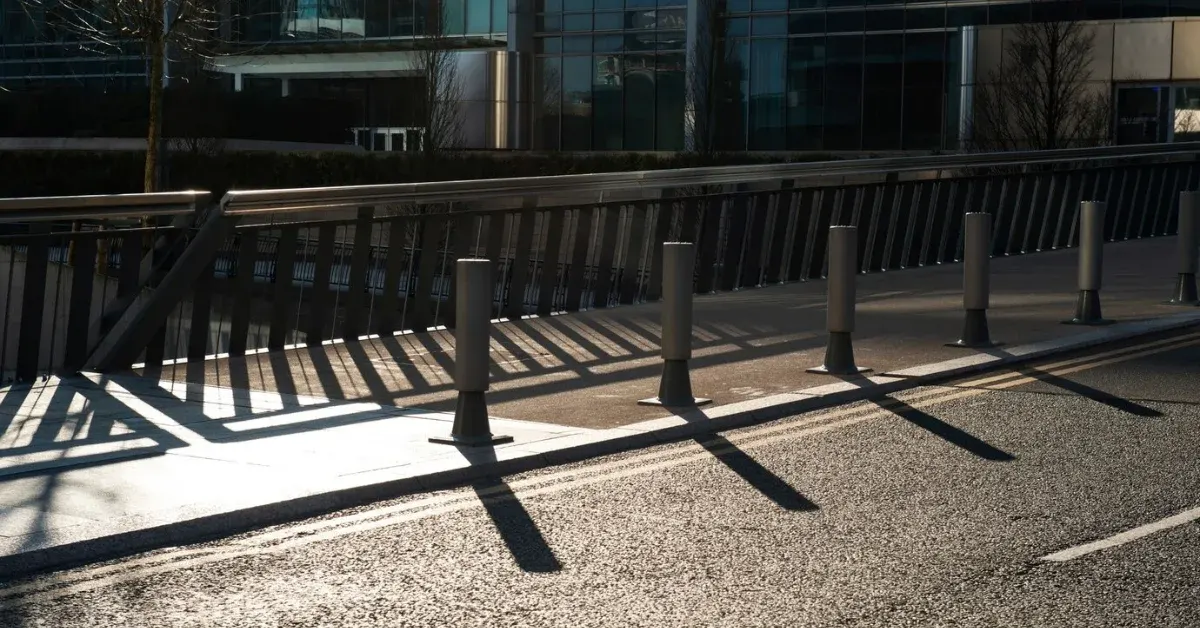The concept of bollards has a fascinating history that dates back to the 17th and 18th centuries. During this time, old cannons were repurposed as bollards on quaysides to facilitate ship mooring. These cannons, buried muzzle-first in the ground with their rear ends projecting above the surface, served as sturdy posts to secure vessels. As the need for ship mooring decreased, the idea of bollards evolved to serve other purposes. In the 19th century, bollards inherited a similar ‘cannon’ shape, often made from stone or metal, and were used to demarcate boundaries, direct traffic, and provide security. Over time, bollards have adapted to suit various urban planning needs, becoming more sleek and modern in design.
Today, bollards are ubiquitous in urban landscapes, serving as protective barriers around retail storefronts, parking lots, and other public spaces to ensure the safety and security of buildings, customers, and pedestrians alike. Whether fixed, removable, collapsible, hydraulic, or automatic, modern bollards continue to draw inspiration from their historical predecessors, providing a robust and effective solution to safeguard against potential threats and hazards, while also enhancing the aesthetic appeal of urban environments.
Modern bollards are designed to be robust, versatile, and adaptable, catering to various settings and requirements. They have become an integral part of urban infrastructure, providing protection and safety in diverse environments, from busy streets and parking lots to pedestrianized zones and sensitive facilities. As urban planning and design continue to evolve, bollards will likely continue to play a vital role in ensuring the well-being of people and property, blending functionality with aesthetics to create safer and more appealing public spaces.
Different Bollard Types and How They Are Used
Here are some additional details on the various types of bollards and their applications:
1. Pedestrian guides:
– Used in shopping centers, museums, and other public areas to guide pedestrians and prevent vehicles from entering pedestrian zones.
– Often decorative and made of materials like stainless steel, aluminum, or concrete.
2. Security bollards:
– Designed to withstand high-impact crashes and prevent vehicles from breaching sensitive areas.
– Used in high-security areas like government buildings, banks, and data centers.
– Can be made of reinforced steel, concrete, or other robust materials.
3. Safety bollards:
– Designed to protect against lower-impact crashes and prevent vehicle intrusion.
– Used in retail stores, restaurants, and other public areas to prevent accidents and damages.
– Can be made of materials like steel, aluminum, or fiberglass.
4. Protection for building components:
– Used to protect vulnerable areas like gas meters, water meters, and electrical cabinets.
– Can be made of materials like steel, concrete, or plastic.
5. Asset protection:
– Used to protect assets like refrigeration units, ATMs, and retail shelving from damage.
– Can be made of materials like steel, aluminum, or plastic.
6. Bicycle security and protection:
– Provides a secure parking spot for bicycles.
– Can be made of materials like steel, aluminum, or concrete.
– Can also serve as a decorative element in urban landscapes.
These bollards can be customized to fit specific needs and environments, and are often used in combination to achieve comprehensive security and safety solutions.
What Is the Cost to Install a Bollard?
The cost of installing bollards can vary widely, depending on several key factors. Here are some of the main things that can affect the price:
1. Number of bollards: The more bollards you need, the higher the total cost. This can range from $100 to $500 per bollard, depending on the type and quality.
2. Type and style: Different types of bollards, such as:
– Fixed bollards: $100-$300
– Removable bollards: $200-$500
– Retractable bollards: $300-$700
– Decorative bollards: $500-$1,500
3. Material: Bollards can be made from:
– Steel: $100-$500
– Concrete: $200-$700
– Plastic: $50-$200
– Fiberglass: $100-$300
4. Size and height: Larger and taller bollards require more material and may be more expensive:
– Standard (3-4 feet): $100-$300
– Tall (5-6 feet): $200-$500
– Extra-tall (7-8 feet): $300-$700
5. Installation method:
– Surface-mounted: $100-$300
– Embedded: $300-$700
– Removable: $200-$500
6. Location: Installation costs can vary depending on the location:
– Urban areas: $500-$1,500
– Rural areas: $300-$700
7. Quality: High-quality bollards made with durable materials and robust construction can be more expensive:
– Basic: $100-$300
– Premium: $300-$700
– Heavy-duty: $500-$1,500
8. Customization:
– Special designs: $500-$1,500
– Custom colors: $200-$500
– Decorative tops: $100-$300
Please note that these prices are estimates and can vary depending on the specific requirements and location. It’s best to consult with a professional installer for a detailed quote.
Conclusion
Bollards have transformed from their humble beginnings as repurposed cannons to become a staple of modern urban design. With various types, including pedestrian guides, security bollards, safety bollards, and more, they cater to diverse needs. The installation cost varies widely, depending on factors such as the number of bollards, type, material, size, installation method, location, quality, and customization options. While estimates range from $100 to $1,500 per bollard, consulting a professional installer is essential for a precise quote. As urban planning continues to evolve, bollards will likely remain a vital element in creating safe, functional, and visually appealing public spaces.



